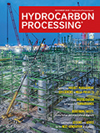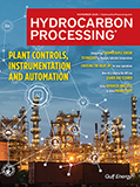Catalysts
Hydrocarbon Processing Award 2022 Winners Honored at Houston Gala
Nearly 150 of the midstream and downstream oil and gas industry’s brightest minds gathered Wednesday to find out, and celebrate, the winners of the 2022 HP Awards.
2022 HP Awards Finalists
<em>Hydrocarbon Processing</em>, the downstream processing sector’s leading technical publication for 100 yr, has announced the finalists for its sixth annual <em>HP</em> Awards, which celebrate innovative technologies and people that have been instrumental in improving facility operations over the past year.
A successful case of resid-to-propylene maximization using premium catalyst technology
The world has experienced profound changes throughout the global disruption created by the COVID-19 pandemic.
BASF introduces X3D, a revolutionary catalyst shaping technology for optimized catalyst performance
New X3D technology to produce catalysts with optimal shape to achieve best performance and efficiency while reducing energy consumption.
Sustainable steel/chemicals production: Removal of impurities for valorization of steel mill gases
Industry faces significant challenges relating to the transition toward cleaner energy and more sustainable feedstocks.
New BASF CircleStar catalyst decreases CO2 footprint for products ranging from jet fuel to plastics
ASF introduces CircleStar, an innovative dehydration catalyst to process renewable feedstocks. The novel star-shaped catalyst achieves a 99.5% selectivity for the ethanol-to-ethylene (E2E) conversion.
The Downstream Rundown: In case you missed it 09/16
In case you missed any downstream news, here are the top stories from last week. These articles include announcements from Clariant, Aemestis, Evonik, ADNOC, Technip and more. Stay up to sate with the latest industry news.
Mitsui Chemicals selects ethylene oxide catalyst from Shell Catalysts & Technologies
Mitsui Chemicals has asked Shell Catalysts & Technologies for its Shell S-896 catalyst, which is expected to provide important economic benefits from raw material (ethylene) savings and also help the organization meet the decarbonization goals.
The downstream rundown: In case you missed it 09/02
In case you missed any downstream news, here are the top stories from last week. These articles include announcements from BASF, Shell, Axens, Petronas and many more. Keep up to date with the latest industry news.
History of the HPI: The 2000s: Net-zero, environmental regulations, capacity acceleration and digital transformation
This final installment of the History of the HPI series details major events in the refining and petrochemicals industry over the past 20 yr, including stricter regulations/initiatives to curb carbon emissions, a safer and more environmentally friendly way to produce and handle chemicals, significant capital investments to boost production capacity and digital transformation.

- Indian Oil buys first Colombian oil under Ecopetrol contract 12/31
- Ukrainian drone attack sparks fire, damages equipment at Tuapse refinery 12/31
- Chile's $2.5-B Volta green ammonia project wins environmental permit 12/31
- China begins issuing second batch of 2026 crude import quotas to refiners 12/31
- EIA: U.S. crude, fuel inventories rose in the week ended December 19 12/30
- Ghana's Tema oil refinery restarts after 9-yr shutdown 12/30




